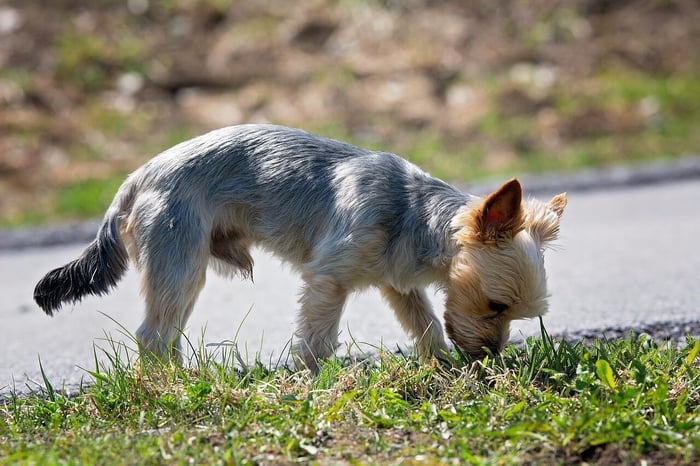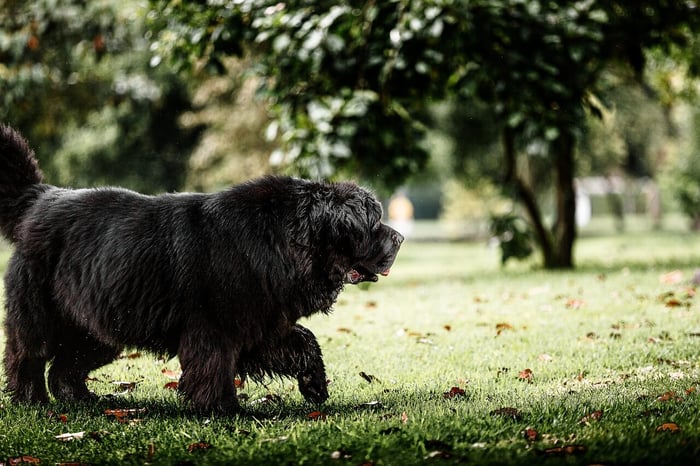Have you ever spent a leisurely afternoon simply observing your dog, only to find them engaged in a seemingly endless pursuit of their own tail? This quirky and endearing behavior leaves many pet owners baffled and filled with questions. In the world where every wag, bark, and tail-chase is a form of canine communication, it's crucial to unravel the mystery behind these actions. This guide is not just a deep dive into the world of tail-chasing; it’s a journey into understanding your dog's health and behavior more intricately. It's time to embark on this exploration, keeping your pet's well-being at the forefront. Let’s understand the world from their eyes, unraveling the reasons for tail-chasing and offering insights into managing and interpreting this behavior.
A robust understanding of your dog’s health lays the foundation for addressing any unusual behavior. So, before you chuckle at your dog’s tail-chasing antics, take a moment to explore the comprehensive guide on dog health to ensure that beneath that playful exterior lies a healthy and happy pet.

Overview of Tail-Chasing
Have you ever wondered, “Why do my dog chase his tail?” Tail-chasing is one of those quirky behaviors that can leave dog owners amused or concerned. While puppies often engage in this playful act as they discover their own tail, there are many common reasons why dogs chase their tails that go beyond simple fun. For most dogs, this behavior could be a conditioned response to boredom, anxiety, or even a signal of underlying health issues.
Tail-chasing, or what can develop into compulsive tail-chasing, might stem from factors like skin irritation, impacted anal glands, or fleas. In some cases, this repetitive behavior can indicate canine compulsive disorder (similar to obsessive-compulsive disorder in humans), which requires prompt behavioral treatment. Older dogs or certain breeds might also exhibit this behavior due to a genetic predisposition or age-related medical problems such as arthritis or seizure-like activity.
For dog owners, it’s essential to act early and understand the context of their dog’s tail-chasing. Whether it’s due to anxiety, negative attention, or an attempt to provide relief from discomfort, observing your dog’s behavior is key. Excessive tail-chasing or obsessively chasing in tight circles can lead to injury if left untreated. Look for other symptoms, such as tail chewing, biting, or licking a painful area, which may indicate medical causes or environmental factors affecting your pet.
Encouraging positive attention and introducing aerobic exercise or interactive toys can redirect your dog’s energy toward healthier activities. Behavior modification techniques, such as positive reinforcement and training games, are great options for helping your dog develop alternate behaviors. However, if your dog’s tail-chasing becomes repetitive and compulsive, consulting a vet to rule out medical conditions or underlying health concerns is crucial.
Understanding the most common reasons behind tail-chasing helps dog owners provide tailored care. Whether it’s addressing physical activity needs, ruling out medical causes, or managing compulsive behaviors with treatment options, proactive action ensures your furry friend stays happy and healthy. Don’t ignore the signs—even negative attention can reinforce this behavior, so act now to keep those tails wagging for the right reasons!

Medical Reasons
When asking, “Why do my dog chase his tail?”, it’s important to consider potential medical causes. Tail-chasing can sometimes indicate underlying medical problems rather than simple play or boredom. Recognizing these issues early can prevent your dog from developing more serious conditions or injuries.
Skin Irritation or Fleas
One of the most common reasons for tail chewing or chasing is skin irritation caused by fleas, allergies, or infections. If your dog obsessively bites or licks its tail, it could be trying to provide relief from itching. Certain conditions like dry skin or hot spots can also trigger repetitive behaviors such as chasing.
Impacted Anal Glands
Impacted anal glands are another frequent cause of discomfort. When these glands are blocked or infected, your dog may chase its tail in tight circles to alleviate the pressure or pain. This condition is especially common in older dogs or certain breeds prone to gland issues. Look for signs like scooting or licking around the anal area.
Neurological Problems or Seizure-Like Activity
In some cases, compulsive tail-chasing can indicate neurological problems or even mimic seizure-like activity. These conditions often involve abnormal brain activity or dopamine levels, leading to compulsive behaviors such as obsessively chasing or biting the tail. Consult a vet immediately if you notice these symptoms.
Painful Area or Injury
If a dog is chasing its tail, it might be due to pain in that region. A painful area, whether caused by a sprain, fracture, or infection, can lead to repetitive actions as your dog tries to address the discomfort. Injury occurs more often in active dogs or those recovering from a physical trauma.
Canine Compulsive Disorder
Chronic tail-chasing can be a sign of canine compulsive disorder, a condition similar to obsessive-compulsive disorder in humans. This behavior often stems from a mix of environmental factors, anxiety, and genetic predisposition. Over time, what starts as a conditioned response can turn into a harmful, repetitive behavior.
Dietary Concerns or Other Medical Conditions
Imbalanced diets or digestive issues may also lead to compulsive behaviors. Dogs experiencing internal discomfort might resort to chasing their tails as a coping mechanism. Additionally, conditions like hormonal imbalances, thyroid problems, or infections should not be ruled out.

Prevention and Treatment
Navigating through the layers of tail-chasing, it’s now time to discuss prevention and treatment. Understanding the possible reasons for this behavior provides the foundation for addressing it effectively. Here's how to tackle and prevent excessive tail-chasing in dogs:
When to Consult a Vet
Regular observations of your dog’s behavior are essential. If tail-chasing becomes frequent, aggressive, or is causing harm to your dog, it's time to seek veterinary advice. Early intervention can prevent further issues and ensure your dog’s well-being.
Possible Treatments
Various treatments can be administered, based on the root cause of tail-chasing. It can range from behavioral training and environmental modifications to medical treatments for underlying health issues. Your vet will be the best guide to providing appropriate treatment.
Tips for Prevention
Prevention is always better than cure. Ensuring your dog has ample physical activity, a balanced diet, and a stress-free environment can significantly minimize tail-chasing. For their comfort, learn how to choose a dog bed or consider a calming dog bed to ensure they have a peaceful and comfortable resting space. Proper oral health maintenance is also crucial, so make sure to explore how to brush your dog’s teeth.
Conclusion
In the spinning world of tail-chasing, it's essential to keep a steady eye on your furry friend, ensuring their spins are all in good fun. Understanding the multifaceted reasons behind tail-chasing – be it psychological, attention-seeking, or health-related – allows you to be attuned to your dog’s needs and well-being. Your observations and timely interventions will ensure that tail-chasing remains a harmless quirk, rather than a signal of underlying issues.












